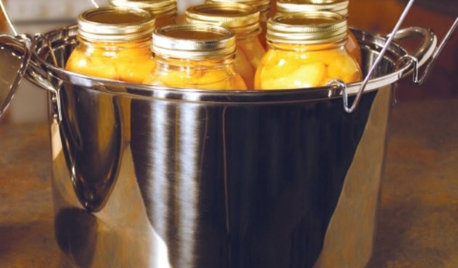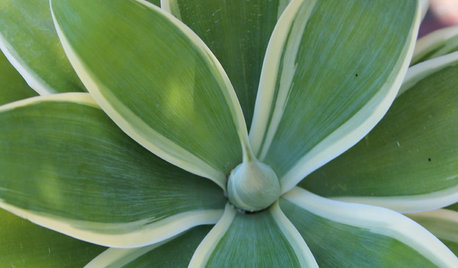I was browsing the USDA NCHFP site:
http://www.uga.edu/nchfp/how/can4_vegetable.html
and noticed an apparent omission: while they give you pressure canning times/pressures for low acid foods, they do not give this information for tomatoes, but still instruct the home canner to add acid (yes, even with a pressure canner!).
So I wrote the following letter to the site:
"Why do you only provide canning information in pressure cooking and boiling water baths for tomatoes but only adding acid? Many folks are interested in preserving them plain, and just increasing process time or pressure.
I understand tomatoes have a large range in acidity and some tomato varieties could be borderline, and perhaps higher in pH than 4.8pH. But why does the home canner not get an option to increase the canning time with the pressure caner, rather than having to add acid or bottled lemon juice? I see that pressure canning plain beets in water takes just 30 minutes, and they are always more alkaline than the lowest acid tomato, so why not provide this information for tomatoes?
What is the safe pressure canning time for plain tomato chunks or pulp in a pressure canner? Also, would you please include this information in your web site?
Thank you for your time and expertise,"
I was told to be prepared to wait a month for the response, but I got an almost immediate response:
"We offer what we have research data to back up. There are not available research-based processes for home canning of tomatoes without the addition of the acid, or in other words, treating them as acid or acidified food.
We have the processes for vegetables, meats, poultry, seafood and tomato products that we can recommend on the website or in our books, and I cannot provide you with what you desire at this time. I'm sorry! I also know of no one doing this kind of research at this time. We are no longer funded to research new processes; perhaps you might want to share your request with companies like Jarden Home Brands (maker of Ball and Kerr jars), Mrs Wages or Presto who all supply the home canning industry."
The response was signed by Elizabeth Andress. After thanking her for her time, and looking on the sites she gave (to no avail) I went into Goggle mode since I figured that perhaps either the Canadian or the Australian governments might have this information.
I found something from the university of Minnesota that I want to share here. I realize what I am writing sound like a lot of deja vu to some of you...
Below is a link to the university of Minnesota food preservation site for tomatoes. They give you the USDA method alongside the U of M methods. They also specify not to use any of these varieties:
"Researchers at USDA and at the University of Minnesota have found that most underripe to ripe, cooked tomatoes have a pH below 4.6. Unfortunately, a few varieties may have a pH above or close to 4.6. These include Ace, Ace 55VF, Beefmaster Hybrid, Big Early Hybrid, Big Girl, Big Set, Burpee VF Hybrid, Cal Ace, Delicious, Fireball, Garden State, Royal Chico, and San Marzano. Some of these are grown for commercial purposes and are not found in home gardens. However, safely canning these varieties requires additional acid for water bath processing or a pressure canning process similar to low acid vegetables."
Reading trough their web site I saw they had done enough testing to raise my confidence level. I will be using their recommendations when canning tomatoes not on the low acid list. Perhaps some of you would be interested in this site and information as well. It is from 2000 but current on the accepted USDA methods that add the acid. It gives you an alternative processing method alongside the USDA that HAS BEEN tested at U of M. Just make sure you know your tomato variety though!
Some of you will not feel safe unless following USDA recommendations, in this case please ignore this post.
Here is a link that might be useful: home canning tomatoes U of Minnesota













readinglady
digdirt2
Related Discussions
Tomatoes and acid.... WB or PC
Q
Forgot to add Acid while canning tomato
Q
Can anyone suggest a Big tomato, high in acid, and firm?
Q
Tomatoes & Acidity (LONG)
Q
digdirt2
cabritaOriginal Author
digdirt2
Linda_Lou
zeuspaul
James McNulty
zeuspaul
wcthomas
cabritaOriginal Author
readinglady
zabby17
cabritaOriginal Author
psittacine